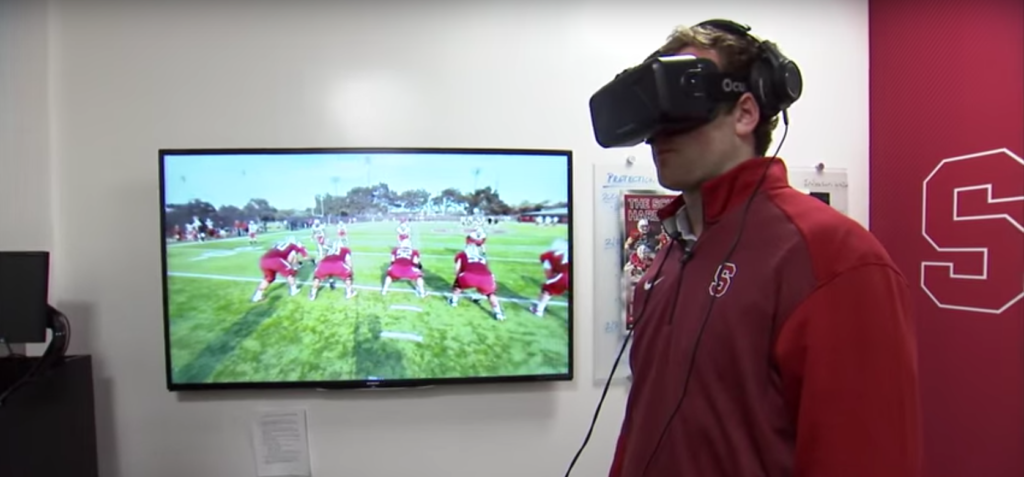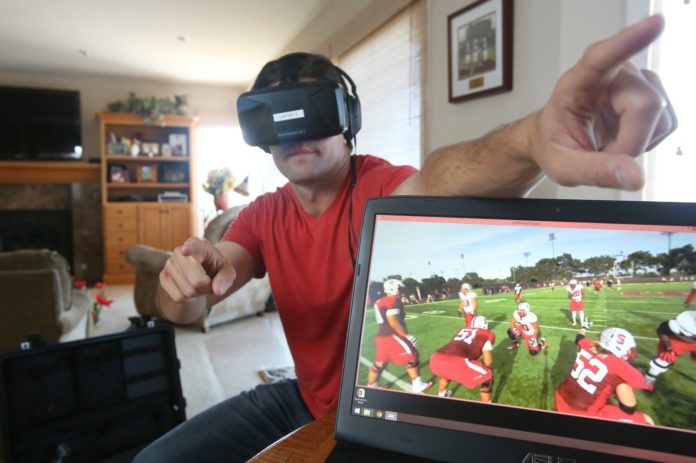The very words “virtual reality” seem to suggest that there are few real-world applications for a VR headset. In fact, total immersion is one of the prime selling points for VR technology. So, why can’t these headsets be used for real use cases?
We’ve covered some of what Strivr is trying to accomplish with its ambitious immersion programs, and more coaches are utilizing this technology as a tool for recruitment and improvement.
Without data about how a player reacts, or what he is physically capable of, coaches are back to the old game of guess work and observation. VR promises to bring that scouter’s instinct into the future. Real methodologies will improve player performance and situational awareness, even fast track healing times. VR will help the next generation of coach train the next generation of athlete.
Assessing Situational Awareness
We know that the difference between a good and a great player is the ability to learn from situations and come up with innovative solutions. It’s hard to recreate every game-making play, so coaches have traditionally relied on drills. Today’s coach can now run the exact same play in VR 20 different times, and have greater feedback on what players are doing well.
For example, coaches can track eye movements on the headset to verify what a player saw and when they saw it, helping micro-analyze a player’s attention on the field at any given moment. They can also run plays simulating a different position, so the quarterback sees what the tight end is doing.
[youtube https://www.youtube.com/watch?v=QSJVU7PK660&w=560&h=315]
The technology even uses real video, so teammates can practice a snap that occurred on the field that day. It’s much easier to recreate the exact circumstances that led to a botched play while working on ways around those challenges.
Roster Diversity
Football, baseball, basketball, hockey… every sport battles the same limitation: time. There’s simply no way to ensure everyone gets the real-life practice they need on the field in order to stay successful and remain at the top of their competitive game.
VR allows several players to run the same play simultaneously. Previously, coaches used verbal feedback during videos to try and give players a teaching exercise. This helped advanced players get better, and clued the other strings into what their game was missing, but it missed the physical aspect. Athletes rely on more than fitness, they must train for stamina or endurance or strength or a host of other qualities that may need improvement for game time.
Coaches can use VR simulations to analyze a player’s decision making and reaction times. The second string becomes a lot more competitive once players have studied real-world plays from a multitude of angles.
Mental Conditioning
The hallmark of a great player is that ability to parse information quickly. Mental conditioning helps great players avoid panic when defenders are trying to rush to steal the ball. Honing the mental game has always been a challenge for coaches, often overcome with motivational quotes and speaking.
Sports fans know how powerful the mental game can be. VR has already been shown to improve cognitive function after brain trauma. Combined with simulations, it can help relieve anxiety that might plague a player after a bad hit or a poor decision. VR gives players the opportunity to safely explore and overcome those sources of anxiety.
Faster Recovery
VR can help us look past our physical limitations in small ways that have a big impact for athletes. Newer research explores how VR can motivate patients to recover faster through task-oriented games. Through progressively challenging athletes to engage a wider range of motion, researchers can effectively control the pace at which an athlete’s PT accelerates.
The athlete still feels the pain that comes from recovery, it’s the goal that gets adjusted. If a patient’s goal is to lift something overhead, for example, researchers can “trick” the user into thinking the goal is accomplished using different levels of tension. In reality, doctors are changing parameters for the height needed to move the object, tweaking how far a player has to extend to get their goal.
Conditioning is another element to recovery, like preventative care for athletes. With better data on how athletes perform in simulations, teams may be able to predict potential injuries from overexertion or look at ways an athlete is unintentionally causing stress to his body.
Final Thoughts

The trouble for these ambitious programs has always been a question of scale. To run a program like this, you need lots of very powerful CPUs that can collect and report various metrics. Sports is a major part of American culture, and there’s more money flowing into the creation of the future athlete.
However, VR’s largest contribution may be in statistics. Coaches with a sense for numbers and data crunching will probably get the biggest benefit from this new technology. It will be interesting to see how second and third stringers perform in the coming years. That may be the most obvious place for sports fans to notice a difference.











